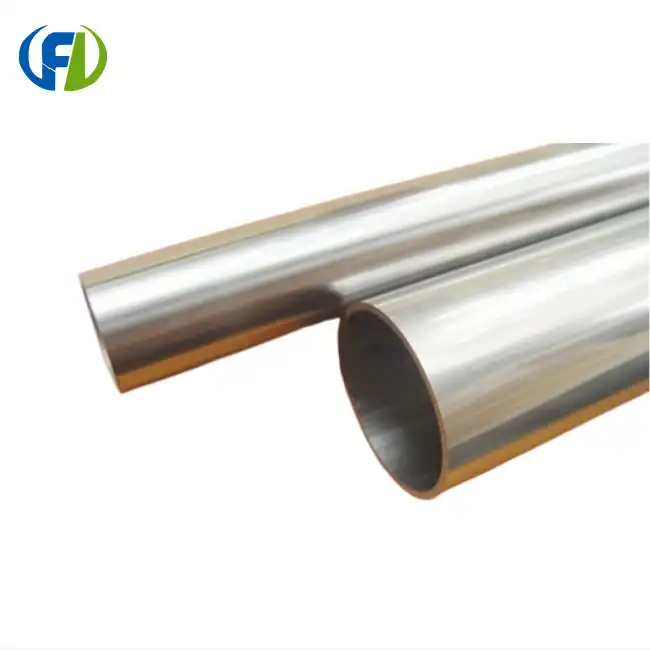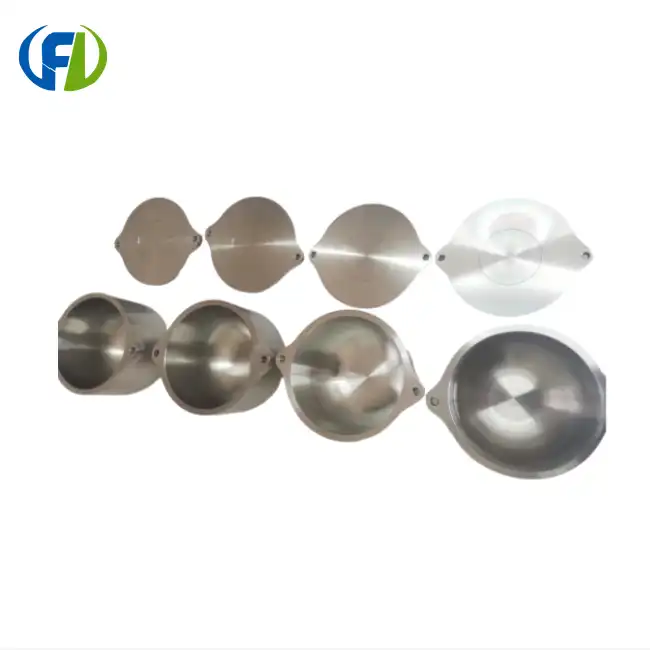Metallurgical Advancements in Zirconium Alloy Design
The evolution of zirconium alloy design has been marked by significant metallurgical breakthroughs. These advancements have paved the way for zirconium tubes with enhanced performance characteristics, suitable for increasingly demanding applications.
Microstructure Engineering
One of the key areas of focus in zirconium alloy design has been microstructure engineering. By controlling the grain size and orientation, metallurgists have been able to improve the mechanical properties of zirconium tube alloys. Fine-grained structures, for instance, contribute to increased strength and improved corrosion resistance. Advanced techniques such as thermomechanical processing and controlled cooling rates have been instrumental in achieving desired microstructures.
Phase Transformation Manipulation
Understanding and manipulating phase transformations in zirconium alloys has been crucial in developing tubes with optimal properties. The hexagonal close-packed (HCP) α-phase and body-centered cubic (BCC) β-phase of zirconium exhibit different characteristics. By carefully controlling the transition between these phases through alloying and heat treatment, engineers can tailor the properties of zirconium tubes for specific applications.
Texture Control
Texture, or the preferred orientation of grains in the metal, plays a significant role in the performance of zirconium tube alloys. By optimizing texture, manufacturers can enhance the mechanical anisotropy of the tubes, improving their resistance to specific types of deformation and stress. This has been particularly important in nuclear applications, where controlling the growth and creep behavior of zirconium tubes is critical.
How Alloying Elements Improve Zirconium Performance?
The addition of alloying elements to zirconium is a cornerstone of modern zirconium tube design. These elements, when carefully selected and proportioned, can dramatically enhance the performance of zirconium in various applications.
Strengthening Mechanisms
Alloying elements such as tin, niobium, and iron contribute to the strength of zirconium tubes through various mechanisms. Solid solution strengthening occurs when these elements dissolve in the zirconium matrix, distorting the crystal lattice and impeding dislocation movement. Precipitation hardening, achieved through the formation of intermetallic compounds, further enhances the strength and creep resistance of the alloy.
Corrosion Resistance Enhancement
Certain alloying elements play a crucial role in improving the corrosion resistance of zirconium tubes. For example, the addition of niobium has been shown to enhance the resistance to uniform corrosion in high-temperature water environments. This is particularly important in nuclear reactor applications, where zirconium alloys must withstand prolonged exposure to corrosive conditions.
Thermal Stability Improvement
Alloying elements can also contribute to the thermal stability of zirconium tubes. Elements like yttrium and scandium have been investigated for their ability to stabilize the microstructure at elevated temperatures, reducing creep and maintaining mechanical properties over extended periods of high-temperature operation.
Next-Generation Zirconium Alloys: What to Expect
The future of zirconium tube alloys looks promising, with ongoing research and development aimed at pushing the boundaries of performance and expanding applications.
Advanced Manufacturing Techniques
Emerging manufacturing techniques, such as additive manufacturing and severe plastic deformation processes, are opening new possibilities for zirconium alloy design. These methods allow for greater control over microstructure and composition, potentially leading to zirconium tubes with unprecedented combinations of properties.
Novel Alloying Concepts
Researchers are exploring novel alloying concepts to develop next-generation zirconium alloys. High-entropy alloys, which incorporate multiple principal elements in near-equiatomic ratios, are being investigated for their potential to offer superior strength and corrosion resistance. Additionally, the incorporation of rare earth elements is being studied for their ability to refine grain structure and improve high-temperature performance.
Computational Design and Modeling
The use of advanced computational tools and modeling techniques is accelerating the development of new zirconium alloys. Machine learning algorithms and first-principles calculations are being employed to predict alloy properties and optimize compositions, reducing the time and cost associated with experimental trial-and-error approaches.
As we look to the future, the science behind zirconium tube alloys continues to evolve, driven by the demand for materials capable of withstanding ever more challenging environments. From nuclear reactors to chemical processing plants, the applications for these remarkable alloys are expanding, thanks to ongoing advancements in metallurgy and materials science.
Conclusion
Are you looking for high-quality zirconium tubes for your next project? At Baoji Freelong New Material Technology Development Co., Ltd., we specialize in producing premium zirconium, titanium, nickel, niobium, and tantalum materials. Our expertise extends to custom OEM solutions and global exports, serving clients across Australia, Korea, Germany, the US, UK, Malaysia, and beyond. We pride ourselves on our commitment to quality and customer satisfaction, always striving to meet and exceed your specifications. Experience the difference that our advanced zirconium tube alloys can make in your applications. Contact us today at jenny@bjfreelong.com to discuss your specific requirements and discover how our products can elevate your project to new heights.
References
1. Zirconium Alloys in Nuclear Applications: A Comprehensive Review. Journal of Nuclear Materials, 2020.
2. Advances in Zirconium Alloy Processing for Improved Corrosion Resistance. Corrosion Science, 2019.
3. Microstructure Engineering of Zirconium Alloys: Current Trends and Future Prospects. Materials Science and Engineering: A, 2021.
4. The Role of Alloying Elements in Zirconium-based Nuclear Fuel Cladding. Progress in Nuclear Energy, 2018.
5. Next-Generation Zirconium Alloys: Challenges and Opportunities. JOM, 2022.
6. Computational Design of Advanced Zirconium Alloys for Extreme Environments. Computational Materials Science, 2021.


_1748238104282.webp)
_1745570014096.webp)
_1745486703024.webp)
